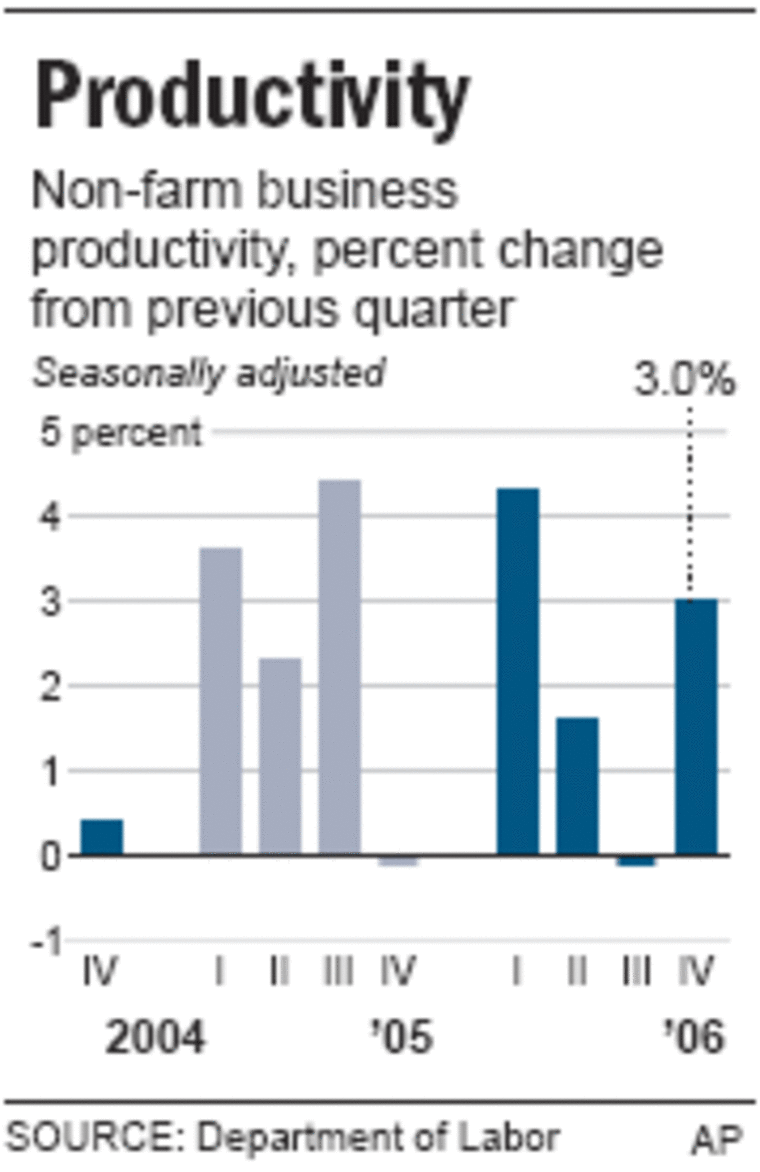Productivity grew at a healthy 3 percent annual rate in the final quarter, although this critical measure of U.S. economic vitality for all of 2006 expanded at the slowest pace in nine years.
Productivity, the amount of output per hour of work, rose by 2.1 percent for all of 2006, down slightly from a 2.3 percent increase in 2005. It was the slowest pace since a 1.6 percent gain in 1997. However, the year ended on a brighter note with productivity growing at an annual rate of 3 percent in the fourth quarter, nearly double what economists had been expecting.
Labor costs for each unit of output rose 3.2 percent for all of 2006, up from a 2 percent increase in 2005 and the fastest rise in worker wages and benefits since a 4.2 percent increase in 2000.
For the fourth quarter, wage pressures eased a bit, rising by just 1.7 percent, a better outcome than analysts had been expecting following a 3.2 percent rate of increase in the third quarter.
While rising wages are good for workers, the concern is that if those increases outstrip gains in productivity, then businesses will start raising the price of their products, setting off a classic wage-price spiral.

The Federal Reserve is keeping close tabs on the performance of productivity and unit labor costs for any signs that slowing productivity and rising wage pressures are having an adverse impact on inflation. The hope is that businesses will meet worker wage demands by trimming their record profits rather than boosting the cost of their goods.
Currently, inflation has been well-behaved, with underlying inflation pressures starting to recede following last year’s surge in energy prices. Many economists believe as long as the spike in energy prices does not spread to wage demands, the Fed will be content to remain on the sidelines as it did last week when it left rates unchanged.
Productivity growth lagged for more than two decades as the country struggled to cope with a series of oil price shocks in the 1970s. However, beginning in the mid-1990s, productivity started to improve dramatically as the cumulative impact of high-tech tools such as computers began to boost worker efficiency.
But since hitting a gain of 4.1 percent in 2002, productivity has been slowly declining although the 2.1 percent rise last year was still nearly a full percentage point above the average annual gains from 1973 through 1993.
For the final three months of last year, the 3 percent rise in productivity at an annual rate was a big improvement from the 0.1 percent drop in the third quarter.
That improvement reflected the fact that the economy, after slowing sharply in the spring and summer, rebounded, with overall output growing at an annual rate of 3.5 percent in the fourth quarter. That was up from a 2 percent rate of growth in the gross domestic product in the third quarter.
The 1.7 percent rise in unit labor costs was down from a 3.2 percent rate of increase in the third quarter.